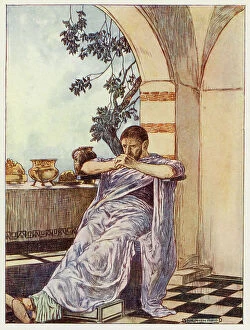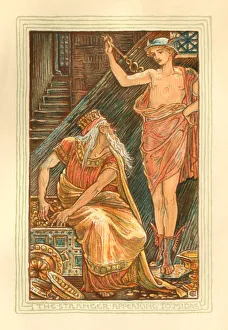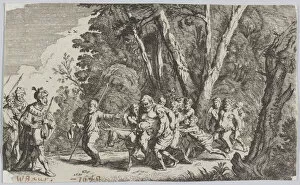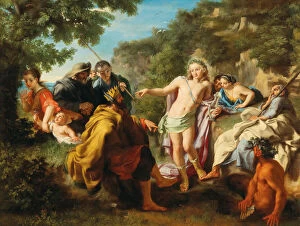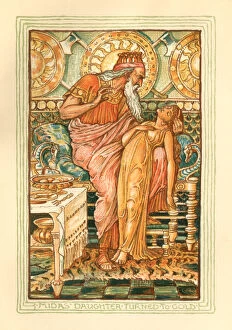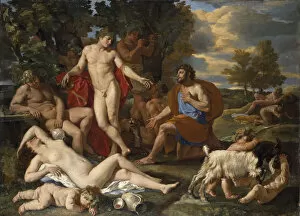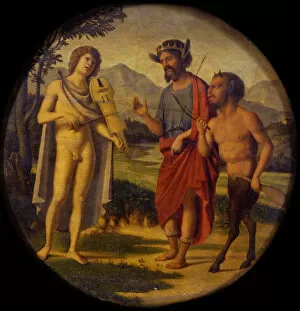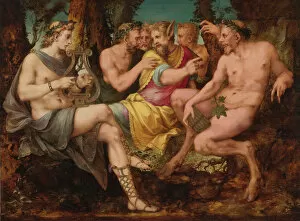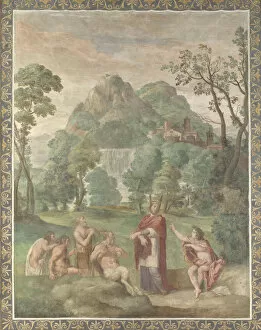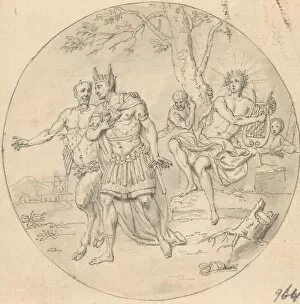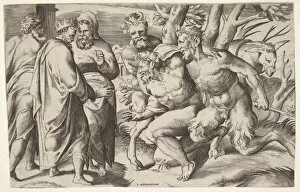King Midas Collection
"King Midas: The Golden Touch and the Price of Greed" In Greek mythology, King Midas was renowned for his extraordinary ability to turn everything he touched into gold
All Professionally Made to Order for Quick Shipping
"King Midas: The Golden Touch and the Price of Greed" In Greek mythology, King Midas was renowned for his extraordinary ability to turn everything he touched into gold. This captivating power is beautifully depicted in Nicolas Poussin's painting "Midas Washing at the Source of the Pactolus. " As Midas dips his hands into the river, its waters transform into shimmering gold, symbolizing both his gift and curse. One of the most famous tales involving King Midas is when he encountered Silenus before him, as illustrated by Johann Wilhelm Baur in "Plate 101: Silenus before King Midas. " Silenus, a companion of Dionysus, had been captured by peasants but was kindly released by Midas. In return for this act of mercy, Dionysus granted him a wish. Foolishly desiring that everything he touches turns to gold forever changed his life. The consequences of this fateful decision are further explored in "The Competition of Apollo and Marsyas and the Judgment of Midas, " an artwork from 1562. Here we witness Apollo defeating Marsyas in a musical contest judged by none other than King Midas himself. However, when he foolishly declares Marsyas as the victor against Apollo's divine talent, it incurs Apollo's wrath who punishes him with donkey ears. Desiderius Erasmus' engraving titled "Frontispiece to In Praise of Folly" also features King Midas prominently. It serves as a reminder that even great kings can be deceived or make unwise decisions due to their human flaws. Another notable event surrounding King Midas is portrayed vividly in Pietro Bianchi's work called "The Judgment Of Midas. " This scene captures his momentous choice between two competing gods – Pan and Apollo – ultimately leading to disastrous consequences. Not all stories about King Midas revolve around greed or punishment.



